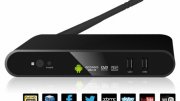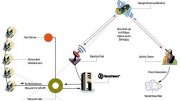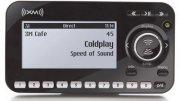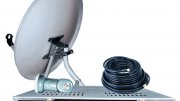
Closed captioning is an assistive technology that allows persons with hearing disabilities to access television programming. Closed captioning displays the audio portion of programming as text superimposed over the video. For a television receiver to display closed captions, it must use a set-top box decoder or contain integrated decoder circuitry.
All English language programming, defined as analog programming first published or exhibited on or after January 1, 1998, and digital programming first aired on or after July 1, 2002, were closed captioned as of January 1, 2006- with some exceptions.
The Federal Communications Commission (FCC) is concerned that consumers may experience difficulty in receiving and/or viewing closed captioning on some digital television (DTV) programming, including high definition television (HDTV), provided by a subscription television provider, such as a cable company or a satellite television provider. These difficulties generally could arise from two causes: 1) the consumer’s set-top box and/or DTV are not properly set to allow closed captions to be displayed; or 2) there are technical problems with the subscription television provider’s system that prevent closed captions from being received and decoded by the set-top box and/or DTV.
What You Can Do
If you have difficulties viewing closed captions on DTV programming, including HDTV, received from your subscription television provider, you should:
- consult any consumer information i.e., manuals or guides on closed captions for DTV programming provided by your subscription television provider;
- ensure that the captioning function on your set-top box, if applicable, is turned on;
- ensure that the captioning function on your DTV is turned on.
If you are still unable to view closed captions on DTV programming, you should contact your subscription television provider for assistance.
If your provider is unable to help, you can file a complaint with the FCC alleging a violation of the Television Decoder Circuitry Act and the FCC’s implemented rules. There is no charge for filing a complaint.
If your complaint concerns the inability of your consumer equipment (i.e., your television or cable box) to deliver captions, you may complain directly to the FCC. If your complaint concerns the lack of captioning on a specific program or channel (i.e., you receive captions on some channels, but not others), you may file a complaint with either the FCC or your video programming distributor (meaning your subscription television service provider or the television broadcaster).
Filing a complaint
You have multiple options for filing a complaint with the FCC:
- By mail (please include your name, address, contact information and as much detail about your complaint as possible):
Federal Communications Commission
Consumer and Governmental Affairs Bureau
Source: www.fcc.gov
|
Viewtv AT-163 ATSC Digital TV Converter Box Bundle with ViewTV Flat HD Digital Indoor TV Antenna and ViewTV HDMI Cable w/ Recording PVR Function / HDMI Out / Coaxial Out / Composite Out / USB Input CE (Viewtv)
|

|
Digital Television Converter Box for Analog TVs with DVR Recorder / USB Movie, Picture, and Music Player Built-In Home Theater (Unique Imports)
|
|
HopCentury ATSC HD Digital TV Converter Box Receiver with HDMI YPbPr RCA Coaxial Outputs, Watch HD Digital TV on Analog Television and Media Player & Recording Functions Home Theater (HopCentury Electronic Co., LTD)
|
|

|
Sun Port® USB DVB-T2 HDTV Digital TV Stick Remote Receiver DVB-C DV ESY1 FM DAB (DL-DVB-T2-DN) CE (Sun Port)
|
|
ViewTV All In One Free Television Bundle with AT-163 Digital TV Converter Box with Recording PVR Function and 150 Mile Outdoor Amplified Antenna with 360° Rotation Home Theater (ViewTV)
|
Related posts:






















